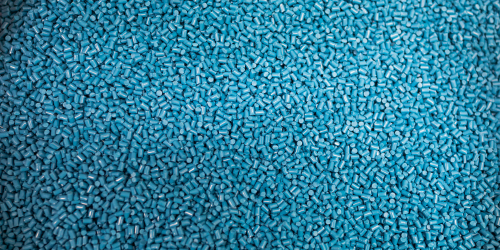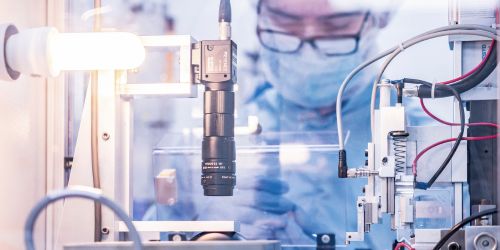In the rapidly evolving world of medical technology, the materials chosen for the development of medical devices play a crucial role in their performance, safety, and effectiveness. Among these materials, polymers have emerged as a critical component due to their versatility, biocompatibility, and range of properties that can be tailored to specific medical applications.
This blog delves into the considerations for selecting the right polymer for medical devices and explores the factors influencing material choice in this highly regulated field.
The Importance of Polymer Selection
Polymers are widely used in medical devices, from simple products like syringes and catheters to complex implantable devices and diagnostic equipment. The selection of the appropriate polymer is vital because it directly impacts the device’s functionality, longevity, and compatibility with the human body. The right choice can enhance patient outcomes and safety, while a poor choice can lead to device failure, adverse reactions, or regulatory hurdles.
Key Factors in Polymer Selection
1. Biocompatibility
Biocompatibility is the foremost criterion in selecting polymers for medical devices. The material must not induce an immune response or cause toxicity when in contact with body tissues and fluids. Polymers like polyethylene (PE), polypropylene (PP), and polyvinyl chloride (PVC) have been widely used due to their proven biocompatibility. Advanced materials such as thermoplastic polyurethanes (TPU) and polyether ether ketone (PEEK) offer high performance and biocompatibility for more demanding applications.
2. Mechanical Properties
The mechanical properties of the polymer must align with the device’s functional requirements. Factors such as tensile strength, elasticity, flexibility, and durability are critical. For example, polycarbonate (PC) is chosen for its high impact resistance and clarity, making it suitable for medical housings and transparent components, while silicones are preferred for their flexibility and resilience in catheters and implants.
3. Chemical Resistance
Medical devices often come into contact with various chemicals, including disinfectants, medications, and bodily fluids. The polymer must resist degradation and maintain its integrity when exposed to these substances. Polymers like fluoropolymers (e.g., PTFE) are renowned for their excellent chemical resistance, making them ideal for tubing and fluid transfer systems.
4. Sterilisation Compatibility
Sterilisation is a critical step in ensuring the safety of medical devices. The chosen polymer must withstand common sterilisation methods such as autoclaving, gamma irradiation, and ethylene oxide treatment without compromising its properties. For instance, polypropylene and polyetherimide (PEI) can endure high-temperature autoclaving, whereas certain grades of polycarbonate and TPU are better suited for gamma sterilisation.
5. Processing and Manufacturing
The ease of processing and manufacturing can significantly influence the selection of polymers. Factors like moldability, extrusion capabilities, and compatibility with additive manufacturing technologies are considered. For high-volume production, injection-mouldable polymers like polystyrene (PS) and acrylonitrile butadiene styrene (ABS) are favoured for their ease of processing and cost-effectiveness.
6. Regulatory Compliance
Medical devices are subject to stringent regulatory requirements to ensure their safety and efficacy. The chosen polymer must comply with relevant standards and regulations, such as ISO 10993 for biocompatibility and FDA guidelines. Manufacturers must conduct thorough testing and documentation to demonstrate compliance, which can influence material choice.
Common Polymers in Medical Devices
Polyethylene (PE)
– Applications: Catheters, tubing, packaging
– Properties: Biocompatible, chemical resistant, flexible
Polypropylene (PP)
– Applications: Syringes, labware, containers
– Properties: High chemical resistance, good mechanical properties, sterilisable
Polyvinyl Chloride (PVC)
– Applications: IV bags, tubing, blood storage bags
– Properties: Flexible, transparent, cost-effective
Silicone
– Applications: Implants, catheters, seals
– Properties: Biocompatible, flexible, resistant to extreme temperatures
Polyether Ether Ketone (PEEK)
– Applications: Implants, surgical instruments
– Properties: High strength, biocompatibility, excellent chemical resistance
Thermoplastic Polyurethane (TPU)
– Applications: Catheters, wound dressings, medical films
– Properties: Flexible, biocompatible, durable
Selecting the Right Polymer for Medical Devices
Selecting the right polymer for medical devices is a multifaceted decision that requires a deep understanding of material science, device functionality, and regulatory landscape. By carefully considering factors such as biocompatibility, mechanical properties, chemical resistance, sterilisation compatibility, processing, and regulatory compliance, manufacturers can develop safe, effective, and reliable medical devices that enhance patient care and outcomes.
As polymer technology continues to advance, it will undoubtedly open new possibilities for innovation in the medical field, paving the way for the next generation of medical devices.
To discuss your next medical device project, please contact us today.





